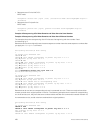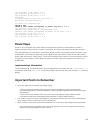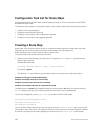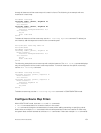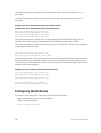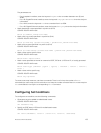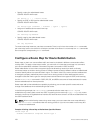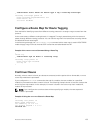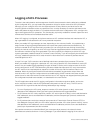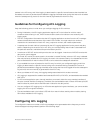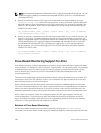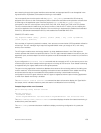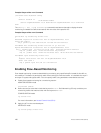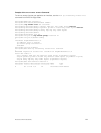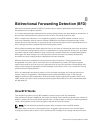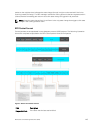Logging of ACL Processes
To assist in the administration and management of traffic that traverses the device after being validated
by the configured ACLs, you can enable the generation of logs for access control list (ACL) processes.
Although you can configure ACLs with the required permit or deny filters to provide access to the
incoming packet or disallow access to a particular user, it is also necessary to monitor and examine the
traffic that passes through the device. To evaluate network traffic that is subjected to ACLs, configure the
logs to be triggered for ACL operations. This functionality is primarily needed for network supervision and
maintenance activities of the handled subscriber traffic.
When ACL logging is configured, and a frame reaches an ACL-enabled interface and matches the ACL, a
log is generated to indicate that the ACL entry matched the packet.
When you enable ACL log messages, at times, depending on the volume of traffic, it is possible that a
large number of logs might be generated that can impact the system performance and efficiency. To
avoid an overload of ACL logs from being recorded, you can configure the rate-limiting functionality.
Specify the interval or frequency at which ACL logs must be triggered and also the threshold or limit for
the maximum number of logs to be generated. If you do not specify the frequency at which ACL logs
must be generated, a default interval of 5 minutes is used. Similarly, if you do not specify the threshold for
ACL logs, a default threshold of 10 is used, where this value refers to the number of packets that are
matched against an ACL .
A Layer 2 or Layer 3 ACL contains a set of defined rules that are saved as flow processor (FP) entries.
When you enable ACL logging for a particular ACL rule, a set of specific ACL rules translate to a set of FP
entries. You can enable logging separately for each of these FP entries, which relate to each of the ACL
entries configured in an ACL. Dell Networking OS saves a table that maps each ACL entry that matches
the ACL name on the received packet, sequence number of the rule, and the interface index in the
database. When the configured maximum threshold has exceeded, log generation stops. When the
interval at which ACL logs are configured to be recorded expires, a fresh interval timer starts and the
packet count for that new interval commences from zero. If ACL logging was stopped previously because
the configured threshold has exceeded, it is reenabled for this new interval.
The ACL application sends the ACL logging configuration information and other details, such as the
action, sequence number, and the ACL parameters that pertain to that ACL entry. The ACL service
collects the ACL log and records the following attributes per log message.
• For non-IP packets, the ACL name, sequence number, ACL action (permit or deny), source and
destination MAC addresses, EtherType, and ingress interface are the logged attributes.
• For IP Packets, the ACL name, sequence number, ACL action (permit or deny), source and destination
MAC addresses, source and destination IP addresses, and the transport layer protocol used are the
logged attributes.
• For IP packets that contain the transport layer protocol as Transmission Control Protocol (TCP) or
User Datagram Protocol (UDP), the ACL name, sequence number, ACL action (permit or deny), source
and destination MAC addresses, source and destination IP addresses, and the source and destination
ports (Layer 4 parameters) are also recorded.
If the packet contains an unidentified EtherType or transport layer protocol, the values for these
parameters are saved as Unknown in the log message. If you also enable the logging of the count of
136
Access Control Lists (ACLs)



